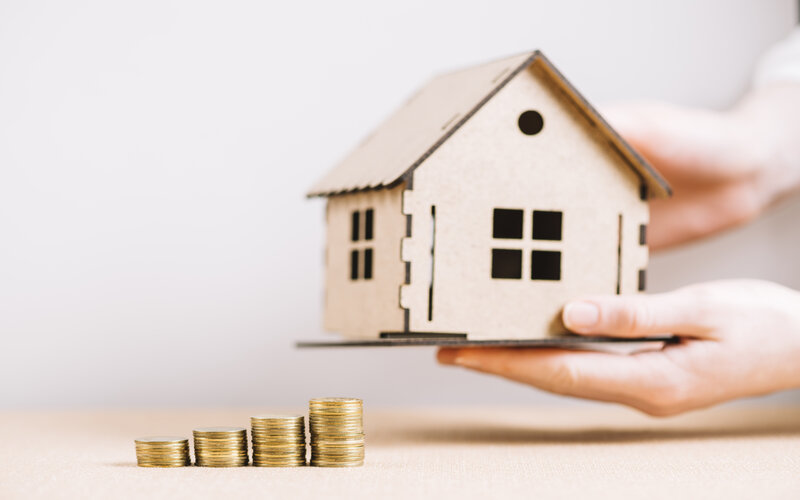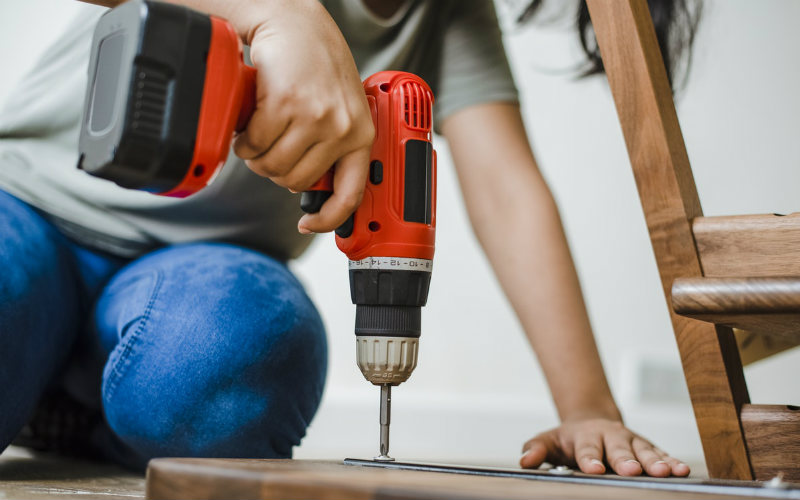How many types of mortgages are there in Australia?
There are literally thousands of home loan products on the market, which might be a bit overwhelming. The first place to start is figuring out which type of home loan is best for your circumstances. If you're planning on buying a home to live in, you can probably exclude anything that isn't an owner occupier home loan, whereas if you're planning on building a new home, you can zero in on construction loans.
You can also rule out home loans that aren't available in Australia. In the United States for example, there are Federal Housing Administration (FHA) loans, where borrowers pay additional mortgage insurance for the federal government to cover the mortgage, which can help lower-income households buy property. There is a bit of crossover with Australian government initiatives like the First Home Guarantee, but there aren't equivalent FHA loans in Australia.
The different types of home loans
The following types of mortgages are commonly used around Australia:
- Owner-occupier home loans
- Refinance home loans
- Guarantor home loans
- Investment home loans
- Low-doc home loans
- Reverse mortgages
- Construction loans
- Bridging loans
- Line of credit home loans
Low variable mortgage rates
Buying a home or looking to refinance? The table below features home loans with some of the lowest interest rates on the market for owner occupiers.
1. Owner-occupier home loans
Owner-occupier home loans are for borrowers who intend to live in the property the loan is being used to buy. Owner Occupier (OO) mortgages usually have lower interest rates compared to products like investment home loans, because the loan is used for a property that will be your main residence. In a lender's eyes, this means less of a risk of default - the idea being people are likely to fight harder to hold on to their home than an investment.
Owner-occupied loans are the meat and potatoes of home loans: an individual or a family borrowing to buy a home to live in, with the property as security
2. Refinance home loans
Refinancing a home loan means changing from one loan to another. There aren't products called ‘refinancing home loans'; refinancing just refers to the process of changing between loans. Refinancing usually involves switching from one lender to another, although some people also refinance internally, negotiating different terms with the same lender. Basically, you borrow money from your new credit provider, which is used to pay off what you owe on the existing loan. You then make repayments on the new amount you have borrowed, per the terms of your new loan. Let’s say you take out a $400,000 loan with Lender A. After a couple of years, you have paid off $100,000, but find a better rate at Lender B, and decide to refinance. Lender B would pay Lender A the $300,000 outstanding on your loan, then you repay this amount to Lender B under the new terms you have negotiated.
By refinancing your home loan to a new loan with a lower interest rate or better features, you could save yourself thousands of dollars over the course of your loan period.
3. Guarantor loans
A guarantor on a home loan is someone who agrees to take responsibility for making repayments in the event that you can’t. Usually a close family member like a parent, guarantors can be useful for people with low income or those who are struggling to reach their deposit goal, since the guarantee offers the lender extra assurance. This can mean lower rates, or waived lenders mortgage insurance on bigger LVR loans. Once again, there are no specific 'guarantor home loan' products, but a guarantor-backed customer will often stand a better chance of being approved for a home loan. Not all loans accept guarantors though.
4. Investment home loans
An investment home loan is a loan for people looking to buy a property for investment, which means renting it out and hopefully profiting as the property’s value increases. They tend to have higher interest rates than owner-occupier loans since investors are usually considered riskier borrowers than those buying a property to live in.
There can be tax benefits to taking out an investment home loan, as the Australian Taxation Office (ATO) states interest payments (among other things) can be claimed as a tax deduction.
5. Low-doc home loans
A low documentation home loan has less stringent proof of income requirements. Low doc home loans are ideal for self employed borrowers, who can't offer up regular pay slips like an employee. To get a low doc loan, you might still need to offer up things like ABN details, Business Activity Statements (BAS) or personal tax returns. These home loans often have higher interest rates and fees to compensate for their more generous lending restrictions, and aren’t offered by as many mainstream lenders as owner-occupier or investment loans are.
Read more about low-doc home loans here.
6. Reverse mortgages
Reverse mortgages allow older homeowners to borrow against the equity in their home. Reverse mortgage borrowers do not have to make repayments while living on the property, but like any loan, interest is charged on the balance, and when they sell the home or pass away the loan needs to be repaid in full, including interest. The older you are, the more you can borrow with a reverse mortgage. Generally, 60-year-olds can borrow roughly 15-20% of the value of the home, while 70+-year-olds can usually borrow 25-30%.
According to ASIC, reverse mortgages can create financial difficulty later in life for a number of reasons:
-
Interest rates and fees are generally higher than standard home loans
-
Compound interest can cause your debts to increase as your interest-owed does
-
If the value of your home doesn’t rise you will have less money for future needs (like medical treatment)
-
Reverse mortgages can affect your pension eligibility
-
Fixed reverse mortgages can be costly to break
7. Construction loans
A construction home loan is a mortgage you take out to build a new home or complete major renovations. Unlike regular home loans, construction loans tend to be lent out in instalments rather than a lump sum, covering expenses as they occur during the construction process. This is called progressive draw-down and it tends to consist of the following five/six stage process:
|
Stage |
Steps |
Typical percentage of total cost |
|---|---|---|
|
Deposit |
The deposit you pay the builder at the start of construction |
10% |
|
Base |
Completing the concrete slab or footings |
About 10% |
|
Frame |
Completing and approving the house frame |
About 5% |
|
Lockup |
Windows, doors, roofing, brickwork, insulation |
Up to 35% |
|
Fixing |
Plaster, kitchen, bathroom, toilet, applicances, laundry, tiling etc. |
15-25% |
|
Completion |
Fencing, site clean-up, final payment to builder |
10-15% |
You are progressively charged interest on the loan as you borrow more, drawing down on the loan. Say you borrow $100,000 to cover the deposit and the base, which takes the builder three months to finish. Over those three months, you make repayments, and pay interest calculated on a $100,000 balance, so by the time of the next draw down of $25,000, the outstanding loan amount is $75,000. The new amount borrowed is added to the outstanding balance, and interest is calculated accordingly.
<Construction Loan table>
8. Bridging loans
A bridging loan is a loan to help you in the transition period between selling your old home and buying your new one. It’s technically an additional loan you take out on top of the new home loan, with extra money given to you to help buy your second property while the other sells. During the ‘bridging period’ you have two loans – typically interest-only repayments – and when the current home is sold the bridging component is incorporated into your chosen loan for your new property.
Bridging home loans are usually shorter, often up to a maximum of 12 months in most cases, and often come with a higher interest rate than standard home loans. Some lenders don’t charge higher rates though, so as ever, it pays to shop around.
9. Line of credit loans
A line of credit home loan allows you to swap equity you’ve built up in your home for cash, up to a certain amount called the credit limit. A line of credit loan is normally reusable, meaning you can borrow and repay funds up to the credit limit as much as you like, which makes it similar to a credit card, except with lower rates.
Line of credit loans can be used for things like:
-
Home renovations and repairs
-
Taking a holiday
-
Paying for a wedding etc.
Line of credit loans tend to be interest-only, but the home loans that offer them often have higher interest rates and administrative fees.
Types of interest rates on a mortgage
As well as the different types of home loans, the different types of interest rates can make a big difference to how much you pay.
Fixed interest rate
A fixed interest rate is a ‘locked’ rate, so it doesn’t change for a set period of time, usually between one and five years. Customers can take advantage of this by locking in a lower interest rate if they expect rates to rise in the coming months/years. On the other hand, fixed-rate loans can disadvantage borrowers if rates drop – you normally have to cop a break fee if you choose to break the fixed component of your loan contract before the term is up.
Variable interest rate
A variable interest rate is a loan with an interest rate that changes with the market. This means your interest rate is likely to regularly change over the life of your home loan, which quite significantly impacts your monthly repayments. Variable home loans are generally more flexible and can also have appealing features like the ability to make extra repayments (often at no extra cost) to help you pay off your loan sooner, but don’t offer the budgeting certainty a fixed-rate loan provides.
Read our article on fixed vs variable rate home loans to gain a greater understanding of the pros and cons of each.
What is a split home loan?
A split home loan splits your repayments into a fixed-rate component and a variable-rate component. Split loans allow you to get the best of both worlds – fixed and variable.
At the end of the fixed-rate period (up to five years), that fixed portion of the split loan will often revert to a ‘rollover rate’ usually specified in the terms and conditions. This rate can be higher than the variable component of your home loan, and essentially means you’ll be on two different home loan interest rates for the remainder of the loan term.
Principal & interest or interest-only?
Principal & interest repayments
The term ‘principal and interest’ (P&I) refers to two components of your home loan repayments:
-
The principal, which is the initial amount you’ve borrowed for the loan
-
The interest, which is the cost charged by the bank to borrow the money
So if you borrowed $400,000 for a home loan at a 5.00% p.a. interest rate, that $400,000 is the principal which you have to pay back, while the interest is what you pay back on top of that principal (5.00% per annum on the balance owing). With each principal & interest repayment, an increasing portion of the payment will go towards paying off the principal and a decreasing portion will go towards paying interest, since you’re chipping away at the balance owing right from the beginning.
Interest-only repayments
Interest-only (IO) loans, on the other hand, delay the repayment of the principal (aka the borrowed amount), for up to five years, although in some cases you can pay interest-only for up to 10 or even 15 years. During this time you only need to repay the interest component, before reverting to principal and interest afterwards.
For this reason, IO loans can be much cheaper to start with since the repayments will be much smaller. But once that IO period is over, repayments can jump significantly, and they can be more expensive overall.
The table below shows the difference in monthly and total repayments of an IO and P&I home loan, based on a 30-year loan of $400,000 at an interest rate of 5.00% p.a and a five year interest only period. Numbers come from the Savings interest only calculator.
|
Loan |
Monthly repayment during IO period |
Monthly repayment after IO period |
Total cost (principal + interest) of the loan |
|
|---|---|---|---|---|
|
P&I loan |
$400,000 |
N/A |
$2,147.29 |
$687,478 |
|
IO loan |
$400,000 |
$1,667 |
$2,338.36 |
$713,404 |
|
Total cost difference |
$ 28,484.91 |
In this instance, the interest-only option is more than $25,000 more costly – and that’s without even taking into account the fact that IO loans typically have higher interest rates than P&I loans.
Compare interest-only home loans
Savings.com.au’s two cents
There are a bunch of different home loans out there, and when you mix them up you get thousands of different variations on the market. For example, you can get a variable P&I owner-occupier loan, a fixed IO investment loan, a split home loan, a low-doc home loan with added features like an offset account, a home loan that allows a 5% deposit as well as the use of a guarantor…we could go on like this.
The takeaway is there is no single “best” product on the market, but there will be products out there that are better for you based on what you’re after, while some loans will be unsuitable. For example, you can’t take out a construction loan for an existing property, and it would also be inefficient to pay higher rates for a low-doc home loan when you can easily provide proof of income in your application.
In most cases, what is really important is the interest and the principal you end up paying. So with this in mind:
-
Look to buy a home in a price range you won’t struggle to afford
-
Try to find a loan with a low interest rate, as this will make a real difference
You don’t necessarily need the lowest interest rate on the market, as there might be a more suitable product for you with a slightly higher rate. But when you’re talking about a purchase as big as property, even the small difference in the interest rate can lead to tens of thousands of dollars difference.
Disclaimers
The entire market was not considered in selecting the above products. Rather, a cut-down portion of the market has been considered. Some providers' products may not be available in all states. To be considered, the product and rate must be clearly published on the product provider's web site. Savings.com.au, yourmortgage.com.au, yourinvestmentpropertymag.com.au, and Performance Drive are part of the Savings Media group. In the interests of full disclosure, the Savings Media Group are associated with the Firstmac Group. To read about how Savings Media Group manages potential conflicts of interest, along with how we get paid, please click through onto the web site links.

Ready, Set, Buy!
Learn everything you need to know about buying property – from choosing the right property and home loan, to the purchasing process, tips to save money and more!
With bonus Q&A sheet and Crossword!



 Denise Raward
Denise Raward
 Harry O'Sullivan
Harry O'Sullivan




